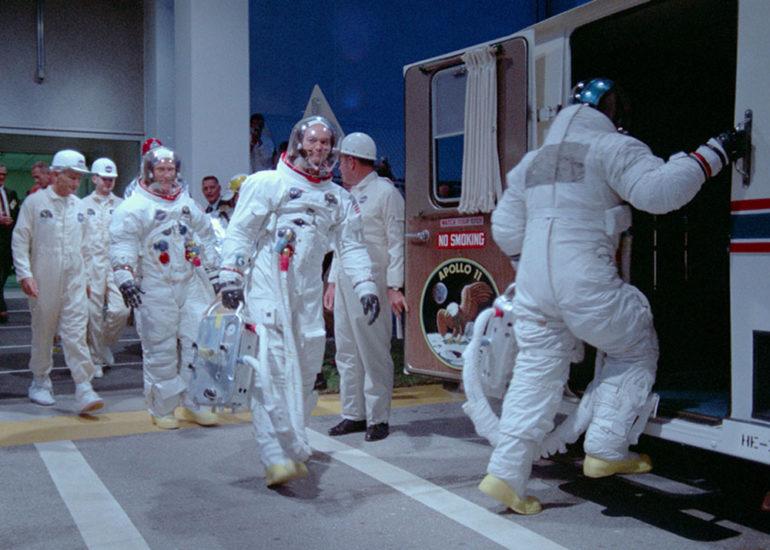Innovative Scores Elevated the Year’s Documentaries
By Jon Burlingame
LOS ANGELES (Variety.com) – It’s next to impossible for a documentary score to be Oscar-nominated alongside the dozens of fictional narratives entered each year. But it did happen, just once: In 1975, composer Gerald Fried was nominated for his music for “Birds Do It, Bees Do It,” a documentary on the mating habits of animals.
Fried, now 91, perhaps best-known for his Emmy-winning score for “Roots,” recalls his surprise at the nomination. He believes that his fresh use of the relatively new synthesizer sounds, along with more traditional orchestra, was probably the reason his colleagues noticed and approved.
No doc score before or since has been nominated. Yet music for documentaries is being taken more seriously than ever before, going by the number of award-season screenings and even live-to-picture concert performances.
“Documentary films have really come of age cinematically,” says composer Jeff Beal, who conducted his score for “The Biggest Little Farm” on Dec. 4 at Los Angeles’ Wiltern Theater, perhaps the most prominent showcase for a doc score this season.
The film chronicles the eight-year odyssey of a California couple realizing their dream of creating a farm that operates in complete harmony with nature, a more challenging process than they could have ever imagined.
“It’s a small film with big emotions, and a very universal, spiritual and beautiful message,” says Beal, a multiple Emmy-winner whose other documentaries include “Blackfish” and “Boston.” His own family roots reach back to farmers in Idaho, and he felt that this “celebration of rural life” demanded a Copland-esque, orchestral Americana sound liberally flavored with guitar, banjo and harmonica.
Beal added a bass flute for a beloved pig, plus tuba and accordion for her piglets, “There’s a lot of lighthearted fun that plays to young people,” he points out, “so I felt that doing a little ‘Peter and the Wolf’ coloring was appropriate.”
British composer Alex Heffes spent five months writing 94 minutes of music for “The Elephant Queen,” about a matriarchal pachyderm that leads her herd across the African savannah in search of water. “There’s a lot of emotion,” says Heffes. “The music is doing a lot of the heavy lifting of the storytelling, so in that sense it’s like doing any regular movie.”
Heffes employed African percussion (notably a huge marimba played by two musicians) and African vocals, but the majority of music was played by a conventional orchestra. “The directors wanted the audience to fall in love with these creatures, to connect on an emotional level,” he says, and they found the financial means to pay for a 75-piece London orchestra.
Heffes even visited the filmmakers on location in Kenya, and it influenced his later composition process. “When you see elephants on film, they seem quite lumbering, but they’re incredibly quiet, stately and graceful on their feet.” So his music for Athena, the title character, is “lyrical and melodic and flowing.
“About halfway through the movie it stops becoming just a nature documentary and you’re just following a family story,” says Heffes, whose other African-themed scores include “Mandela: Long Walk to Freedom” and “Queen of Katwe.” “They wanted the music to take you on that journey.”
Not every doc needs an orchestra, however. For “Toni Morrison: The Pieces I Am,” about the renowned author (who died in August), composer Kathryn Bostic used a jazz quartet.
“She’s such a force, so self-aware, she always knew that she had this incredible capacity to create with words,” the composer notes. “So I wanted to elevate that with a kind of music that didn’t have a particular, traditional constraint.”
Bostic decided to give her filmmakers “a menu of different elements that, to me, would enhance the storytelling. So I chose the moodiness and the sassiness of the blues. The jazz element was also part of that, giving it a vernacular that would not be traditional, because she’s not a traditional writer.”
Although the composer re-read much of Morrison’s work in preparation for composing, the film’s animated opening sequence also proved inspiring. “There was something about the way that [animation] was put together that tuned me into the rhythm and spirit and force of Toni Morrison,” she says. “So it pretty much wrote itself once I got that. It was like an endless feast of sonic opportunity.”
Bostic added wordless vocals throughout the film and capped it with a song, “High Above the Water,” inspired by both the author’s waterfront home and by her evocative description of “African angels flying back home.”
The most unique-sounding doc score of the year may have been for “Apollo 11,” the chronicle of the 1969 moon landing and the culmination of the U.S.-Soviet space race of the 1960s. Ohio composer Matt Morton recalls director Todd Douglas Miller’s initial skepticism about creating a score “using only 1969 or earlier instruments. I think he thought I was a little off my rocker,” the composer says.
Because “the Apollo program was the cutting edge of science and technology” at the time, Morton decided to match the footage with its musical equivalent: The Moog IIIc synthesizer, a Mellotron, the Hammond organ, period drum machines and two 1960s devices to mechanically create echo (the Binson Echorec and Echoplex units). For orchestral sounds, he turned to more contemporary sampling processes.
“I wanted to underscore not only the danger, and take viewers on a ride, but also underscore the importance of what actually happened — not just one of the greatest human achievements, but one of the most significant evolutionary steps of life on Earth,” he says.
Morton was literally a one-man band, composing, orchestrating, performing, recording and mixing every note of the score. “I didn’t want to use a bunch of sci-fi sounds, anything that would be distracting,” he says. “So it took a lot of experimentation. There’s a couple of years’ worth of synth experiments. It was a technological challenge.”

